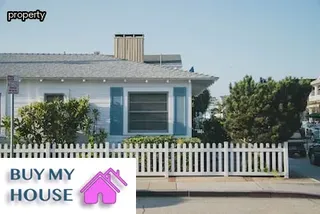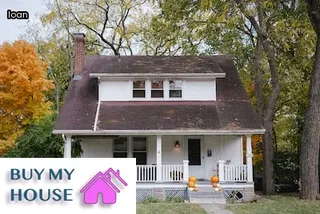Oklahoma's foreclosure laws are in place to protect borrowers and lenders alike. The state has a long-standing history of offering protection to its citizens against predatory lenders, and the foreclosure process is no different.
When a borrower defaults on their loan, the lender must follow a specific timeline of steps before they can commence with a foreclosure sale. The first step is for the lender to file an affidavit with the court system outlining the defaulted amount and any other pertinent information about the foreclosure proceeding.
From there, the court will issue a notice of sale and set a date for it to take place. Once this has been done, the borrower has three months to either pay off or otherwise resolve the debt before it goes into foreclosure.
During this three-month period, borrowers have options such as loan modification or refinancing that may help them avoid foreclosure altogether. If none of these options are available, then after those three months are up, the lender can proceed with the foreclosure sale and take possession of their property.
It's important for anyone facing foreclosure in Oklahoma to understand all of their rights under state law so they can make informed decisions about how best to protect their interests.

When it comes to foreclosure in Oklahoma, the preforeclosure stage is one of the most important steps to understand. Preforeclosure happens when a borrower has missed several mortgage payments and has received a Notice of Default from their lender.
The Notice of Default is an official letter informing them that they are in default on their loan and must either pay off the delinquent amount or enter into a workout plan with their lender. During this period, the borrower has the opportunity to negotiate with their lender to find an alternative payment solution or modify the terms of their loan in order to avoid foreclosure.
In some cases, a borrower may also qualify for a loan modification program, which could help them stay in their home and avoid foreclosure altogether. Additionally, there are various programs available through state and federal agencies that can provide financial relief or assistance with legal fees during preforeclosure.
By understanding preforeclosure in Oklahoma, borrowers can take advantage of these options and have a better chance at stopping a house foreclosure before it begins.
In Oklahoma, the foreclosure process begins with a Notice of Default. This document is typically mailed to the homeowner by the lender and indicates that the homeowner is delinquent on their mortgage payments.
Once this notice is received, the homeowner has 30 days to cure the default and reinstate their loan. If they fail to do so, the lender can then proceed with filing a Notice of Sale which begins the foreclosure process.
The Notice of Sale will be filed with court clerk’s office and published in local newspapers for three consecutive weeks. At this point, a date for a public sale will be set at least 21 days out from when it was filed.
The homeowner still has an opportunity to stop the foreclosure up until that date by paying all outstanding amounts due or reaching an agreement with their lender outside of court. However if no action is taken, a trustee appointed by the lender will conduct a foreclosure auction during which interested buyers can bid on the property in order to satisfy the debt owed.
The highest bidder will become the new owner of record and take possession of the home shortly afterwards.

When a homeowner in Oklahoma is facing foreclosure, it is important to know their rights throughout the process. Under state law, the mortgage lender must notify the homeowner of their intent to foreclose 60 days prior to filing suit.
This notice must include a statement indicating that the borrower has the right to reinstate or cure the loan by paying all past due amounts plus applicable fees and costs within 30 days of receipt of the notice. During this time period, homeowners have additional protection such as being able to challenge inaccuracies in the foreclosure filings and contesting any violations of contract terms.
They can also negotiate with lenders for more favorable terms or even ask them to abandon a foreclosure altogether if they are able to come up with an alternative method of repayment. Further, homeowners are allowed to stay in their homes until a court order orders eviction and they may be entitled to receive up to $2,000 in relocation expenses when vacating.
Knowing your rights during foreclosure proceedings is essential for any Oklahoma homeowner facing this difficult situation and understanding how best to take advantage of them can help ensure that you don’t lose your home unnecessarily.
When facing foreclosure in Oklahoma, homeowners have a few options to help avoid the sale of their home. Firstly, they can contact their lender and discuss the possibility of loan modification or other repayment plans.
Homeowners should also look into government programs such as HARP (Home Affordable Refinance Program) and HAFA (Home Affordable Foreclosure Alternatives) which offer assistance for those who qualify. Additionally, homeowners may find that filing for bankruptcy protection is a viable option if all else fails.
Bankruptcy will stop the foreclosure process while the homeowner works out a repayment plan with their lender or seeks an alternative solution. It's important to note that seeking legal advice from a qualified attorney specializing in foreclosure defense can be invaluable to helping someone understand their rights and options when dealing with foreclosure in Oklahoma.

When it comes to foreclosure in Oklahoma, many people are unaware of the potential for deficiency judgments. A deficiency judgment is a court order that allows a lender to seek repayment of any remaining debt owed on a property after it has been sold in a foreclosure sale.
This can happen if the amount received through the foreclosure sale is not enough to cover what is owed. Deficiency judgments are especially important for Oklahomans facing foreclosure to understand since they may still be held liable for any remaining debts even after selling their home in a foreclosure sale.
It's important to know that deficiency judgments can be requested by the lender and courts may grant them if the borrower does not have sufficient assets or income available to pay back the loan. Additionally, deficiency judgments can stay on an individual’s credit report for up to seven years from when they were issued.
Because of this, it's imperative for those facing foreclosure in Oklahoma to be aware of how deficiency judgments work so they can make informed decisions about their situation and potentially avoid these long-term financial consequences.
When facing foreclosure in Oklahoma, it is important to understand the process and seek help as soon as possible. Knowing your rights and understanding the legal requirements can provide a path to effective resolution.
Foreclosure counseling services, legal aid organizations, and other resources are available to assist those in need of help with foreclosure in Oklahoma. It is essential to be informed about the state laws so that you can make an informed decision on what action to take.
Working with an experienced attorney or housing counselor can provide invaluable advice on how to stop a house foreclosure and give you peace of mind during this stressful time. Additionally, there are also programs designed specifically for homeowners facing foreclosure that could help reduce or eliminate debt payments or even save your home from being taken away.
Finding the right assistance for your situation can make all the difference towards a successful outcome when dealing with a house foreclosure in Oklahoma.

Failing to make payments on a mortgage in Oklahoma can have major consequences. In most cases, the lender will issue a Notice of Default, which is the first step towards foreclosure.
A default may also cause a homeowner to incur late fees, legal fees, and other costs associated with the foreclosure process. If payments are not made or arrangements are not made with the lender, they may proceed with foreclosure proceedings, resulting in the homeowner losing their home and their equity investment.
The homeowner will still be responsible for any unpaid balance due on the loan even after their home is sold at auction. Additionally, this could result in damage to a person's credit score and future ability to obtain loans or lines of credit.
If you are a homeowner in Oklahoma, it is important to understand the legal process of foreclosure and how to stop it. Receiving a breach letter from your lender is the first step in that process.
Understanding what type of letter you have received and the consequences of not responding can help protect your home and your rights as a homeowner. Breach letters are formal notices that inform borrowers that their loan has gone into default.
This means that the borrower failed to make payments on time for an extended period of time or broke the terms outlined in their loan agreement. If no action is taken after receiving this notice, the lender will begin foreclosure proceedings against the borrower to reclaim their property.
It is important to contact an attorney or HUD-approved housing counselor if you receive a breach letter in order to explore options such as loan modification or filing for bankruptcy to avoid foreclosure.

The timeline to start the foreclosure process in Oklahoma varies depending on the type of loan and other factors, but generally speaking it takes anywhere from 3-6 months. Before the foreclosure process begins, lenders must first notify the borrower that they are in default.
This can take up to 30 days and includes sending a notice of acceleration letter, which informs the borrower that their loan is past due and that they need to pay what is owed within a certain amount of time. After this initial notification period has passed, lenders may begin to file a Notice of Default with the county clerk's office.
This document serves as public notice that foreclosure proceedings are underway and sets out a timeline for when the foreclosure sale will occur. During this period, it is possible to stop the foreclosure process if payments are made or other arrangements are made with the lender.
When it comes to foreclosure in Oklahoma, there are two primary methods of foreclosure available – judicial foreclosures and trustee's sales. Judicial foreclosures have several advantages over trustee’s sales that can be beneficial for homeowners looking to stop a house foreclosure in Oklahoma.
Firstly, because judicial foreclosures involve a court order, they are typically slower than a trustee’s sale. This extended timeline allows homeowners more time to stop the foreclosure by working out an agreement with their lender or filing for bankruptcy.
Secondly, because the process is court-supervised, lenders must provide more evidence documenting why foreclosure is necessary. This often creates more opportunities for homeowners to dispute the foreclosure if they feel they have been wrongly accused of defaulting on their loan.
Finally, due to the formal nature of judicial foreclosures, all parties involved have access to legal representation which can help ensure that any agreements or rulings made during the proceedings are fair and just. All in all, judicial foreclosures offer certain advantages over trustee’s sales that homeowners should consider when looking into how to stop a house foreclosure in Oklahoma.

In Oklahoma, nonjudicial foreclosures are the most common form of foreclosure proceedings. This means that lenders can repossess a borrower's home without needing to go through the court system.
The foreclosure must still be conducted in accordance with Oklahoma state laws and regulations and is subject to certain legal requirements. Generally speaking, foreclosure proceedings begin when a borrower fails to make payments on their mortgage for at least three months, but can also occur if the loan is delinquent or the property is abandoned.
During this process, lenders typically provide borrowers with notice of default and an opportunity to cure the debt before beginning foreclosure proceedings. After sending notices and providing an opportunity for repayment, lenders can file for foreclosure by filing a notice of sale with the county clerk's office.
The lender then has the right to sell the property at public auction in order to recoup their losses from any unpaid loans. It should be noted that even though nonjudicial foreclosures are not subject to judicial review, borrowers may still have certain rights under Oklahoma state law that could help them avoid losing their home altogether.
Facing foreclosure in Oklahoma can be a stressful experience and it is important to understand the foreclosure sale process in order to protect your interests. In Oklahoma, when a house falls into foreclosure, the lender will typically file a Notice of Default with the county court where the property is located.
This notice serves as an official notification that the borrower has defaulted on their loan and must either pay off the remaining balance or face foreclosure. After the notice is filed, lenders may choose to pursue an out-of-court settlement or proceed with a judicial foreclosure sale.
During this time, borrowers have an opportunity to negotiate a loan modification with their lender or enter into other arrangements to keep their home. If these negotiations are unsuccessful, then lenders will continue with the foreclosure sale process.
This consists of filing additional paperwork with the court and scheduling a public sale of the property at auction for potential buyers. The sale proceeds are used to repay any outstanding debt owed by the borrower, including attorney fees and other court costs associated with filing for foreclosure.
It is important for borrowers facing foreclosure in Oklahoma to familiarize themselves with all aspects of this process in order to make informed decisions about how best to protect their interests.

When facing a foreclosure in Oklahoma, homeowners have several options to save their home from being sold at auction. One of the most common ways is to reinstate the loan by paying off the overdue amount, plus any additional costs or fees that have accrued.
This option can be expensive and time-consuming, but it is an effective way to keep your home out of foreclosure. In some cases, lenders may allow borrowers to modify their loan terms and extend the due date for missed payments.
Borrowers should also be aware that they may qualify for a loan forbearance plan, in which lenders agree to reduce or suspend payments until a certain date. Another alternative is to apply for a repayment plan with the lender, where borrowers can make smaller payments over time while still keeping up with interest and principal payments on their loan.
These are just some of the many reinstatement options available before a foreclosure sale in Oklahoma; if homeowners take the time to explore all their alternatives, they may be able to save their home from foreclosure.
When faced with the difficult decision of whether to let a house go into foreclosure, it is important to weigh both the pros and cons. One of the biggest advantages of allowing a home to go into foreclosure is that it can be a quicker process than selling the home, which may be financially beneficial if time is of the essence.
Conversely, one of the primary drawbacks of foreclosure is that it could have long-term impacts on credit scores, making it more difficult to qualify for future loans or lines of credit. Another potential consequence is that homeowners may be subject to deficiency judgments, meaning they are still obligated to pay back any remaining balance after their house has been foreclosed on.
Finally, filing for bankruptcy or taking out a loan modification could be other alternatives to consider before letting a house go into foreclosure in Oklahoma.

If you are an Oklahoma homeowner facing foreclosure, there are several alternatives to letting your house go into foreclosure that you should be aware of. One option is to negotiate a loan modification with your lender, which allows for changes to your loan terms in order to make them more affordable.
This could involve a reduction in monthly payments, an extension of the repayment term, or even a reduction of the principal balance due. Another alternative is to pursue a short sale, which involves selling the property for less than what is owed on the mortgage and getting approval from the lender.
Additionally, if you are unable to keep up with your mortgage payments due to financial hardship, you may be eligible for a forbearance agreement or special forbearance program that can provide temporary relief from payments or suspend them entirely until certain conditions have been met. Finally, if all else fails, deed-in-lieu of foreclosure allows the homeowner to voluntarily transfer ownership of their house back to their lender in exchange for avoiding foreclosure proceedings and its associated costs.
Foreclosure in Oklahoma typically takes anywhere from 3-6 months. It begins with the lender filing a Notice of Default, which officially notifies the homeowner that they are behind on their payments.
This is followed by a Notice of Sale, which gives the homeowner 30 days to make payment arrangements or face foreclosure. If payment arrangements are not made, the lender will proceed with foreclosure proceedings.
Once these are complete, a date will be set for auctioning off the property and transferring title. The entire process is complete after another 30 days of processing paperwork, during which time the borrower can still attempt to make payment arrangements and stop foreclosure.
Ultimately, it takes approximately 3-6 months for a house to go through foreclosure in Oklahoma.

Many homeowners in Oklahoma are not aware of the consequences of allowing their house to go into foreclosure. Foreclosure can be a devastating event for a homeowner, leading to a loss of their home and major damage to their credit score.
There are many reasons why people let their house go into foreclosure. These include losing employment, unexpected medical bills, divorce, or being unable to keep up with monthly mortgage payments.
When income drops significantly, or people experience a financial hardship they may find themselves struggling to pay their mortgage and unable to keep up with payments. With no other options, homeowners may choose foreclosure as an alternative instead of negotiating with the bank or looking for other solutions.
Other times, people simply don't understand what is happening and make the wrong decisions when it comes to handling their finances. No matter the cause, letting your home go into foreclosure can have serious consequences for both the homeowner and lender.
Foreclosure is a legal process in Oklahoma that lenders can utilize to collect unpaid debts. It begins when the borrower defaults on their loan payments and the lender takes ownership of the property.
The foreclosure process differs from state to state, but typically follows a few key steps. In Oklahoma, the process begins with a Notice of Default being sent to the homeowner informing them that they are in default and must cure it within a certain amount of time or risk losing their home.
After this notice has been issued, the foreclosure sale date is set and published in a local newspaper at least 21 days prior to the sale date. On the day of the sale, any interested parties may bid on the property at an auction held by either the county sheriff or court-appointed trustee.
If no bids are made, then the lender will repossess it and pursue other methods for recovering its debt such as selling it at a later date. By understanding how foreclosure works in Oklahoma, homeowners can take steps to stop foreclosure and keep their home if they are facing this situation.
Yes, Oklahoma is a redemption state meaning that homeowners have the right to reclaim their homes after a foreclosure sale has occurred. This means that even after your home has been sold at a foreclosure auction, you may still be able to reclaim it by paying off the mortgage balance and associated costs.
Every state has different rules and statutes when it comes to foreclosures, so it's important to understand how they work in Oklahoma if you're trying to stop a house foreclosure. In Oklahoma, a homeowner has up to two years from the date of sale to redeem their home.
The redemption period starts on the day of the foreclosure sale, not from when you receive notice that your home is being foreclosed upon. During this time, the former homeowner can pay off all debts and reinstate their loan provided that all fees and expenses are paid in full.
If you don't pay off your debts during this time then the new owner takes possession of the property and can evict any tenants living on the property. Knowing whether or not Oklahoma is a redemption state is just one part of understanding how to stop a house foreclosure in Oklahoma - but it's an important one!.
A: Yes, it is possible to stop a foreclosure in Oklahoma, but it is recommended that you consult with an experienced real estate lawyer or other legal professional who can help assess your options and provide guidance on the best course of action.